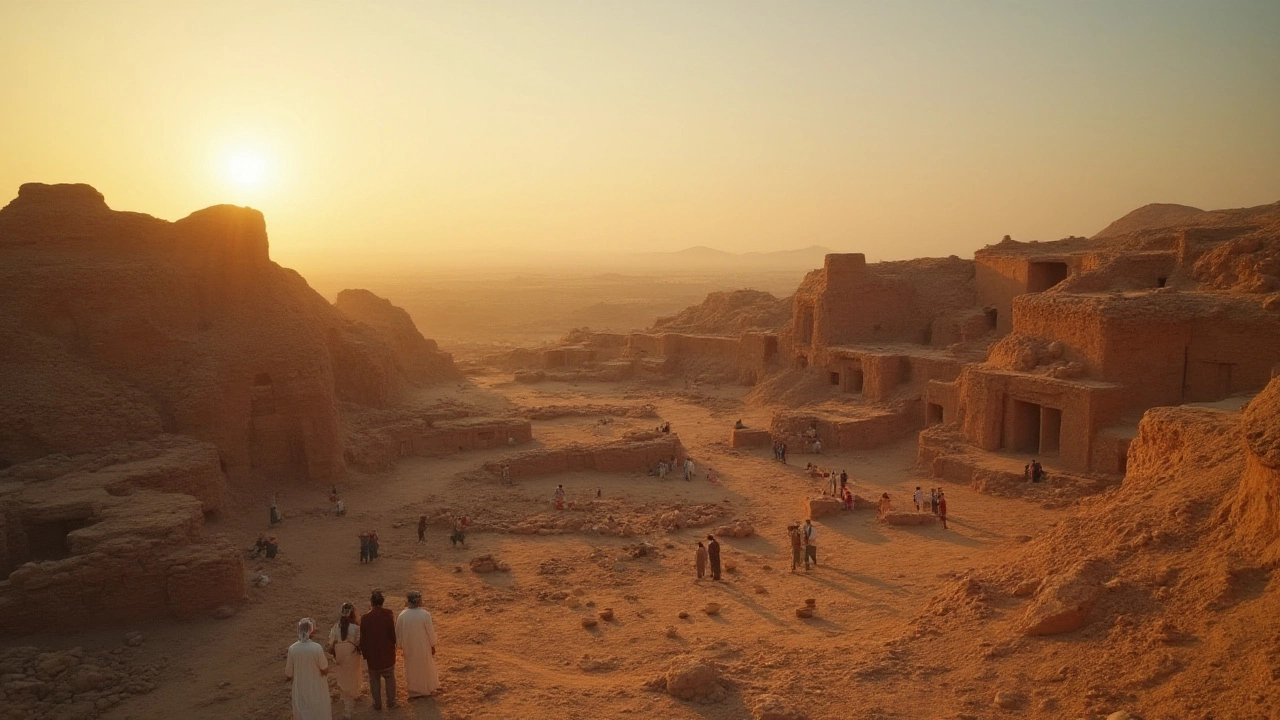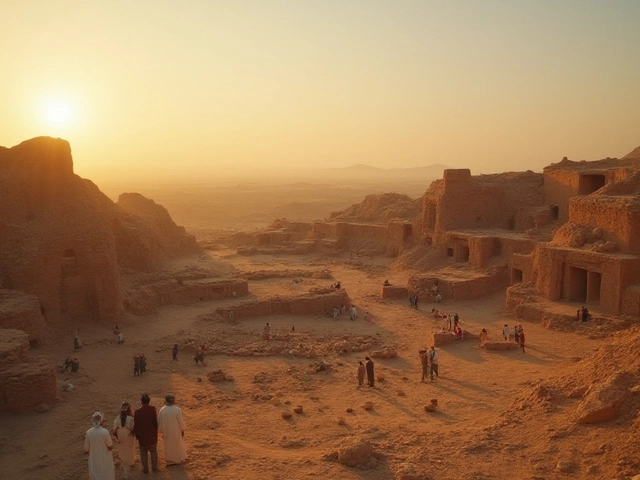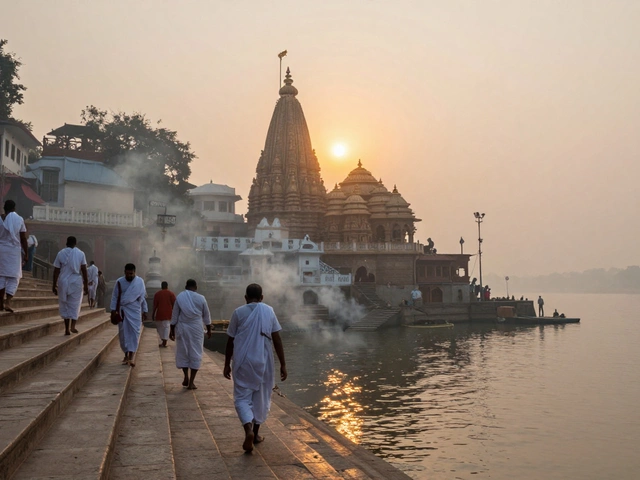If you think India’s ancient roots are just colorful legends, think again. There’s a patch of earth that’s been around, bustling with life, for way longer than the Taj Mahal or the old ghats of Varanasi. We're talking about land where the story of humanity in South Asia really took off: the Indus Valley Civilization, and before it, the mysterious settlement known as Mehrgarh. That dirt under your feet? Some of it predates the pyramids in Egypt.
Tracing Ancient Footsteps: Why Mehrgarh Matters
You might not hear every history teacher mention Mehrgarh, but ask any archaeologist who has spent their life excavating ancient India and their eyes will light up. Tucked in what is now Balochistan, Pakistan, Mehrgarh isn’t just some old village – it’s one of the earliest farming settlements on earth, dating all the way back to 7000 BCE. That's more than 9,000 years ago. Want a time machine? This spot is as close as it gets.
People settled here before the wheel rolled into use. What really blows my mind is how advanced the people of Mehrgarh were. They cultivated wheat and barley, herded sheep, and even crafted pottery. These weren’t just survivalists scraping by; they were creators, builders, and thinkers who established the foundations for India’s later dynasties and heritages.
Here’s a little fun fact: Archaeologists found evidence of dentistry at Mehrgarh. No joke—there are skulls with drilled molars dating over 7,000 years ago. Toothaches may have hurt, but these folks weren’t waiting on a modern dentist appointment. The remains of beads, pottery, and sculpture show an artistic flair that hints these people enjoyed life, not just tolerated it.
For history geeks and ordinary travelers alike, the story of Mehrgarh flips the script on everything you think you know about the distant past. It tells you that long before Vedic chants or great empires, ordinary people experimented, adapted, and thrived in ways that shaped our world today.
The Indus Valley Civilization: India’s Oldest Urban Center
Often, when someone asks about the most ancient place in India, you’ll hear Harappa or Mohenjo-daro brought up. These big hitters of the Indus Valley Civilization date from about 3300 BCE, and they’re still some of the country’s crown jewels of ancient heritage. Harappa (now in modern Pakistan) and Mohenjo-daro showcased a level of city planning that would impress any modern-day architect.
The neat grid layouts, the first known urban sewage systems (yep, they beat Rome to the punch), and complex granaries suggest a city life miles ahead of its time. What really stands out? The standardized bricks. Just imagine: over 4,000 years ago, someone was measuring bricks with a ruler to make sure their house was as sturdy as a neighbor’s.
Artifacts like seals, weights, and jewelry? They’ve ended up in museums worldwide. The famous ‘Dancing Girl’ bronze sculpture is only 10.5 cm tall, but it dances across pages of history textbooks for a reason. She’s proof that creativity and leisure had a home beside hard work even way back then.
Let’s put some numbers into perspective. The Indus Valley once spanned more than 1.2 million square kilometers. Over 1,400 sites have been discovered so far, with over 100 in the Indian states of Gujarat, Haryana, Punjab, Rajasthan, and Uttar Pradesh. Can you wrap your head around that? This wasn’t just a city—it was an entire civilization humming with life.
| Civilization | Main Sites | Estimated Start | Key Features |
|---|---|---|---|
| Mehrgarh | Mehrgarh (Balochistan) | 7000 BCE | Early farming, pottery, dentistry |
| Indus Valley | Harappa, Mohenjo-daro, Dholavira, Lothal | 3300 BCE | City planning, drainage, granaries, standardized bricks |
| Vedic Period | Kurus, Pancalas | 1500 BCE | Texts, fire altars, chariots |
Dholavira, in Gujarat, is often called India’s best-preserved Indus Valley city. Walking among those sun-baked ruins, you’ll see reservoirs, signboards with mysterious script, and huge city gates. You don’t need to imagine ancient India—you’re standing right in it.
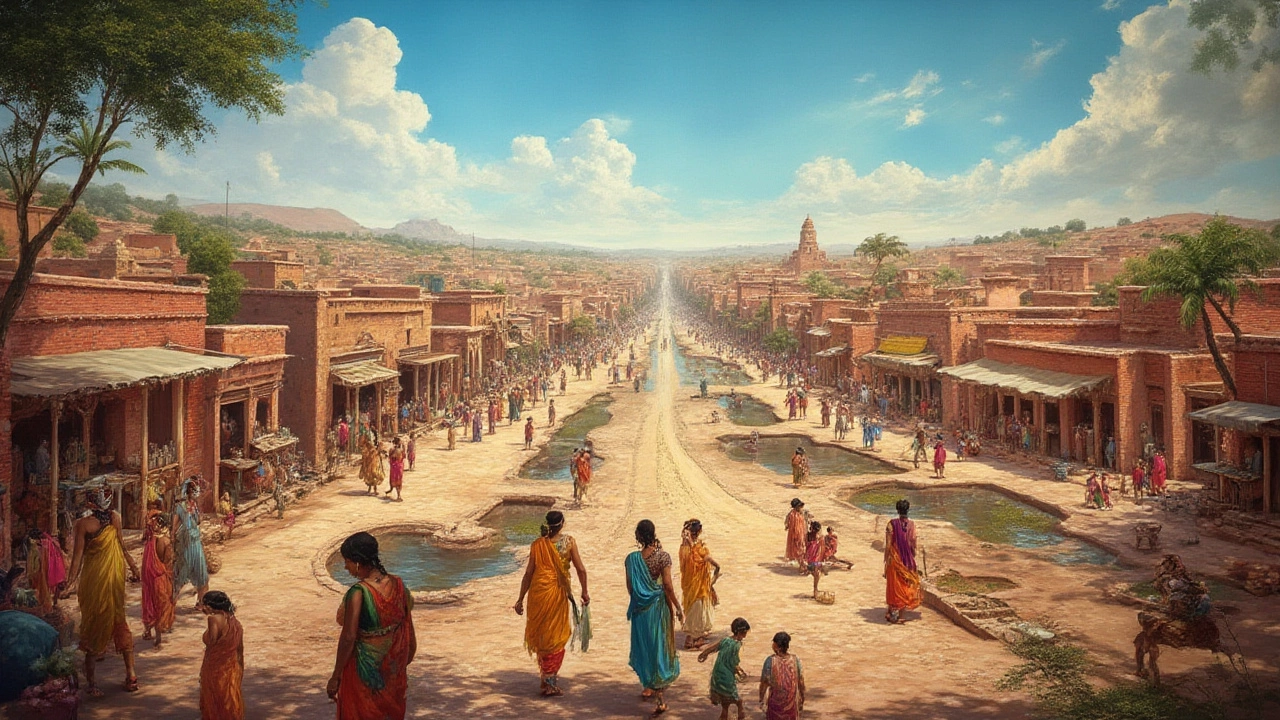
Echoes from Prehistoric Sites All Across India
So, where’s the most ancient place in present-day India? If we go strictly by modern borders, look to Bhirrana and Rakhigarhi in Haryana, two fascinating sites belonging to the same Indus culture. Bhirrana, for example, might date back as early as 7570 BCE, making it one of the world’s oldest settlements.
Step into a rock shelter in Bhimbetka, Madhya Pradesh, and you’re face to face with India’s Stone Age. Paintings on those rocks, some believed to be over 10,000 years old, show dancing, hunting, and odd animals, hinting at a time when mammoths still roamed. These caves aren’t just UNESCO World Heritage Sites. They’re windows into people’s imaginations, long before writing existed.
Heading down south, you’ll find Adichanallur in Tamil Nadu—a site where urn burials from over 3,800 years ago were unearthed. Turns out, ancient Indians honored their dead with care and art, just like pharaohs thousands of kilometers away. Here, bronze tools, songs etched in symbols, and skeletons with shell bangles bring the ancient past right up to your fingertips.
Farther east, Odisha boasts Ashokan edicts at Dhauli, proof that even the Mauryan emperor picked this land for his message of peace almost 2,300 years ago. Each region has its own roots tugging deep into prehistory. So, there’s not just one ancient place—India’s entire landscape is basically a layered cake of lost worlds and buried legends.
The Living Heritage: Varanasi and Madurai—Legends Woven into Life
But let’s get real for a second. What about India’s continuously inhabited cities? Varanasi claims to be the world’s oldest living city, with a history stretching back at least 3,000 years. Imagine walking down narrow lanes where those very same bricks could have greeted the sandals of Buddha, Kabir, and Tulsidas. Sadhus here say the city never sleeps; its soul glows as bright in festival as in funeral. The ghats whisper stories, morning to night, about the never-ending pulse of civilization.
Further south, Madurai in Tamil Nadu oozes ancient energy too. Evidence points to settlements more than 2,500 years old. The Meenakshi Temple has seen empires rise and crumble, yet the chants and ceremonies flow on—bridging centuries in living color.
These cities aren’t just relics. People here don’t just preserve the past in glass cabinets; they live it every single day. Festivals, rituals, and even market banter carry a memory thread that stretches back into foggy prehistory. So if you're searching for ancient India in action, these are your must-visit spots.
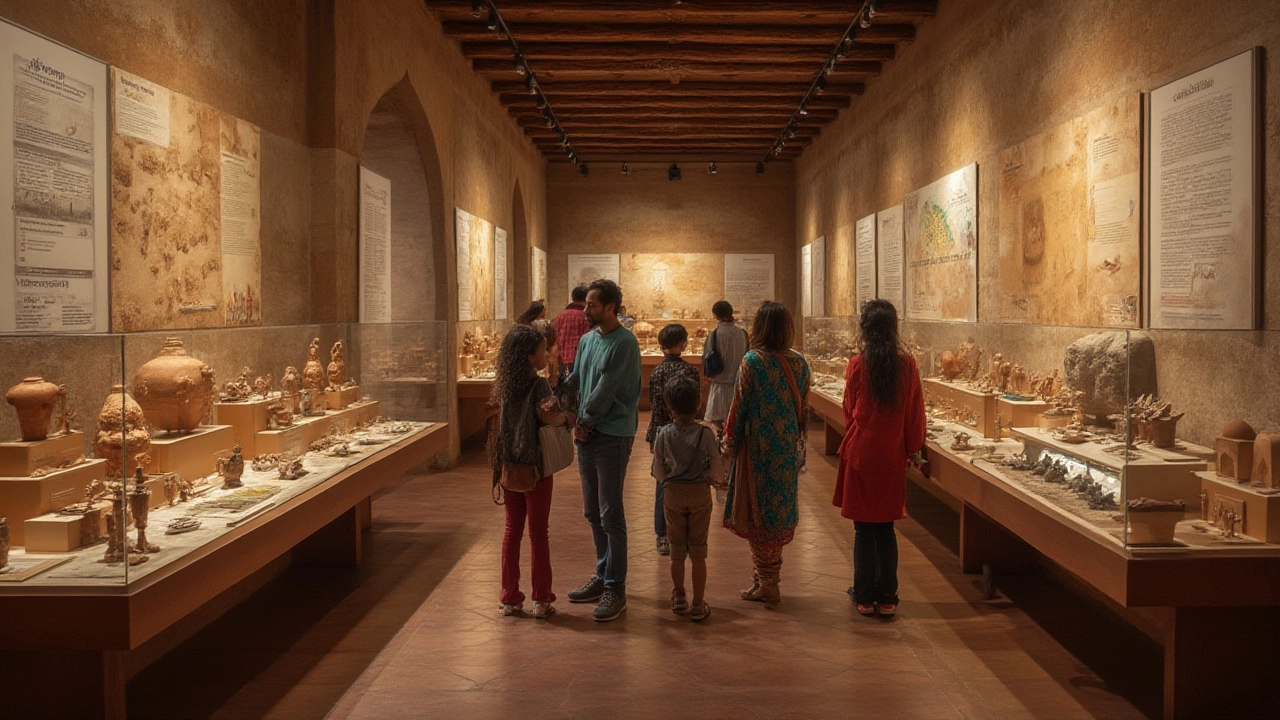
How to Visit These Ancient Sites and What to Expect
Ready to see the cradle of civilization? Planning a trip to these places is like prepping for a journey into your own ancestry. If you want that lost-in-time experience, pack curiosity alongside your sunscreen. Before you go, check for any special permits or guides. Places like Bhimbetka Caves and Dholavira are UNESCO World Heritage Sites—so expect some visitor rules, but also top-notch information boards and local guides who are walking encyclopedias.
Teaming up with an archaeologist-led tour can make all the difference. You’ll get to touch pottery shards (carefully, with permission), learn to spot Stone Age tools in the dirt, and read the clues left behind in old bricks and signboards.
- If ancient DNA is your thing, visit Rakhigarhi for a peek into excavations that are rewriting textbooks, with skeletons sporting jewelry that’d spark envy at any party.
- If you prefer art, head to Bhimbetka to see Stone Age graffiti you can’t help but share on Instagram.
- History buffs: Dholavira offers reservoirs and fortifications – best explored early in the morning to dodge that desert sun.
- Spirit seekers: Varanasi and Madurai will have you choking up at riverside rituals that seem to have flowed without pause since dinosaurs vanished.
Strike up a conversation with locals, buy a handmade artifact, and don’t be shy about asking questions. Most of these places have simple accommodations and nearby food shacks serving spicy, unforgettable meals. Always be extra respectful; you’re walking the footsteps of ancestors and living cultures here.
And don’t forget your camera. Some places, especially government-listed sites, don’t allow flash photography—but honestly, it’s the afterglow in your memory that’ll stay with you long after you go home.
The bottom line? The most ancient place in India isn’t just a dot on a map—it’s a mosaic of memories, inventions, and dreams passed down over thousands of years. Once you experience it, you’ll never see “ancient history” the same way again. Next time your feet press Indian soil, take a moment. Chances are, you’re standing atop a piece of the world’s oldest civilization, and that, my friend, is pure magic.
